Written by Lisa Roberts, American Long Course Professional Triathlete and TriSports Elite Team Member
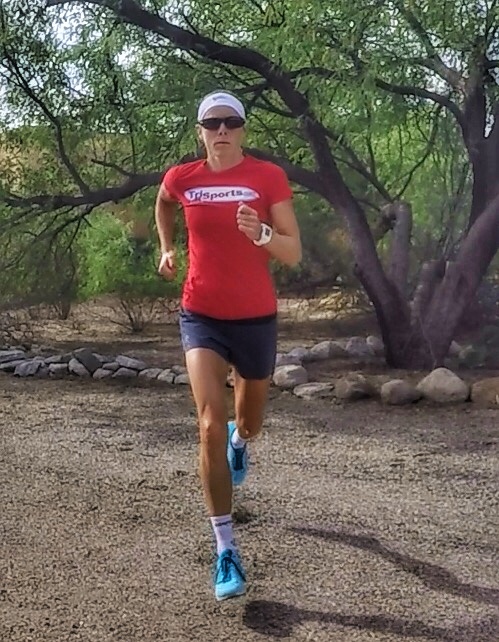
Is there a perfect running style? Unfortunately, the answer to that simple question isn’t all that simple or clearly defined. So I’ll say “sort of” for each individual. Particularly when it comes to triathletes, there are more efficient ways of running. Especially when it comes to triathletes, working towards a more efficient running form is far more beneficial than striving for a perfect running form.
Efficiency is better, here’s why:
Triathletes come from varied athletic backgrounds and do not have enough training time to develop running form like pure runners and the physical demands running off the bike are drastically different. Therefore, any work you do to improve your running mechanics should place primary importance on increasing your running efficiency. For example, I began my athletic career as a distance runner and my running gait has gone from being described as a “gazelle” and now is likened to a “bull.” I take it as a compliment.
So where do you start?
Begin with body alignment, posture and using gravity. This can be described as an “up tall and proud” chest, looking up the road, not down at your feet, with a slight forward lean originating from the ankles. This gets you using gravity to push forward, keeps your chest open, relaxed, and puts you in the correct position for a good foot strike and push off.
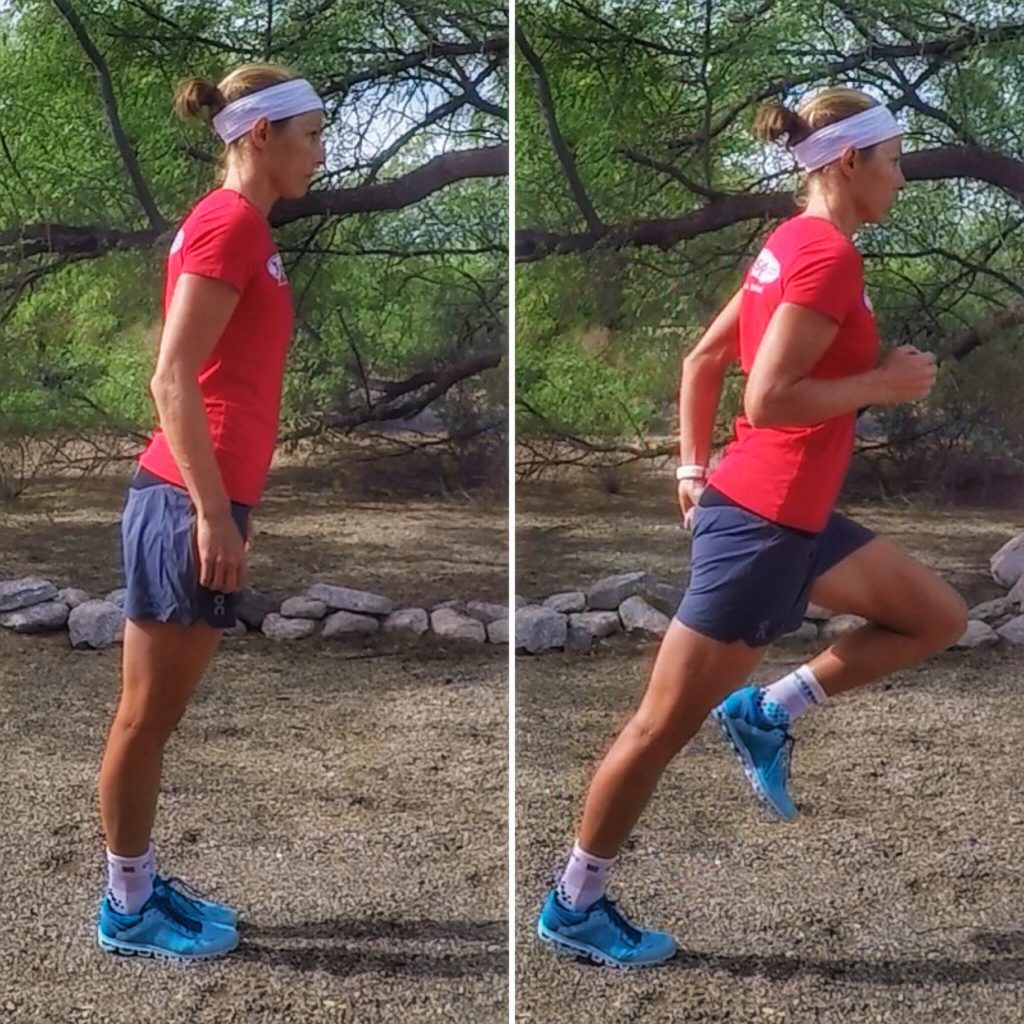
Leg drive and Push Off
Next, we look at leg drive and push off. Your running power comes from your hips, glutes, core, particularly when our legs are tired from riding the bike. Try this: from a standing position, lean forward slightly from the ankles. At a certain point of leaning you will need to pick up one leg and stick it out in front of you to stop you from falling on your face (see picture above). That combination of the ‘drive’ feeling coming from the hips along with the push off coming from the rear leg is what we’re after. Your arms will naturally follow in an alternating pattern. Don’t underestimate your arms; however, we’ll cover this later with cadence.
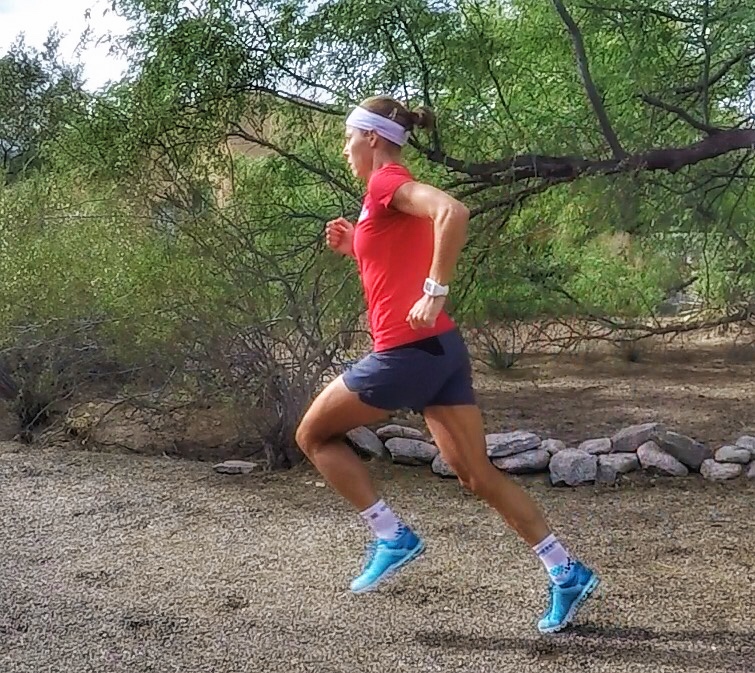
Foot Strike and Stride Length
Foot strike stride length and are next and conflicting opinions abound as to how this should happen. There is some debate between whether runners should avoid heel striking or forefoot striking at all costs. Some of these opinions are made in hopes of selling a particular type of running shoe and some are held based on biomechanics and other historical research. Let’s go with somewhere in between and settle on striking somewhere in the midfoot, which is what most of us do anyway. There is some advantage to being able to control and shift to various foot strike patterns. Most triathletes have a tendency toward a slight heel/midfoot strike, this helps the leg absorb the impact through the knee, ankle, and outside of the foot then spreads the weight across the foot as it makes full ground contact. With decent hip mobility and drive from the core, the knee, ankle, and foot are set up to achieve an optimal position.
As for stride length, here’s where I shifted from the “gazelle” to the “bull.” Many years of cycling (and sitting at desks) has tightened the hip flexors and shortened my stride. But what has resulted is a very efficient stride length and rate for long distance triathlon.
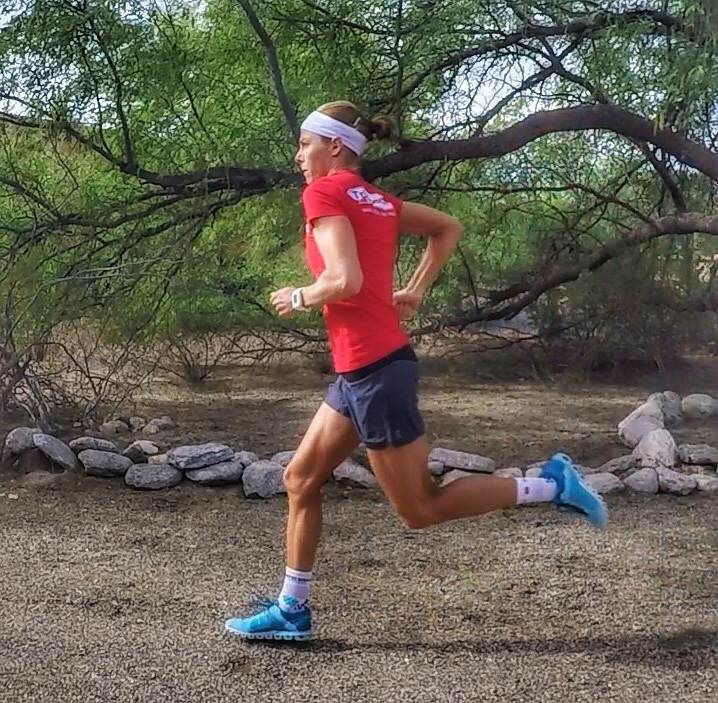
Is there an ideal cadence?
Stride rate (a.k.a turnover or cadence) is your rhythm. It holds the entire running motion together and is your flow. According to USAT, numerous surveys indicate that the best runners and triathletes take 90+ steps per minute (per single leg). Some of this is a function of their speed, but even runners and triathletes with less ability and subsequently lower speeds who run well for their ability display similar cadences. We can also control our stride rate by swinging our arms. Often times I focus on my arm swing and connecting it with power emanating from my core – especially when I am starting to feel fatigued.
Read more about Running the Right Way from ITU Olympic Distance World Champion and 6-Time Hawaii IRONMAN World Champion Mark Allen.
Don’t forget your arms!
Finally, let’s discuss your arms and their importance in run form. Aside from helping you keep your balance and rhythm, they are also your first aspect to monitor in staying up tall, relaxed and symmetrical. Keeping a rhythmical swing, with hands and shoulders relaxed and not crossing them over our body’s center-line simply helps to keep all the other form metrics in place.
Running form mechanics can be a complex subject; my hope is you can take these basic points and start to drill down on each one in more depth. There are a variety of drills you can perform to really hone in on these mechanics. Happy running!
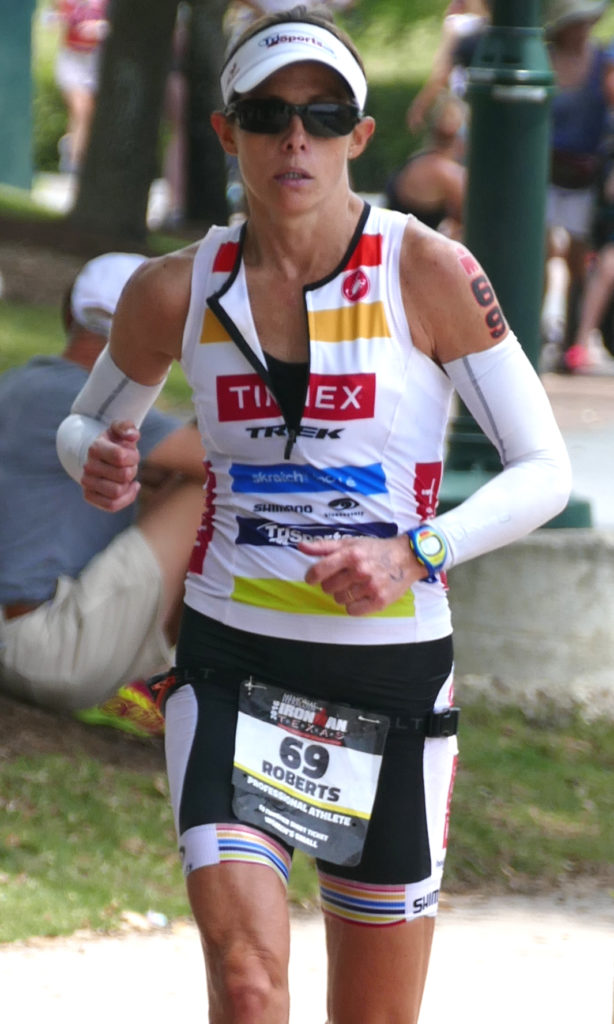 About the Author: Lisa Roberts is an American long course professional triathlete living in Tucson, Arizona. She has run competitively for 25 years, competing specifically in triathlon for 15 years, professionally for 8 years. As a professional she is a 3x Ironman World Championship finisher, has 17 pro Ironman podium finishes and 3 Ironman/70.3 run course records. She is a USAT Level 1 Coach, European cycling tour guide and Registered Landscape Architect.
About the Author: Lisa Roberts is an American long course professional triathlete living in Tucson, Arizona. She has run competitively for 25 years, competing specifically in triathlon for 15 years, professionally for 8 years. As a professional she is a 3x Ironman World Championship finisher, has 17 pro Ironman podium finishes and 3 Ironman/70.3 run course records. She is a USAT Level 1 Coach, European cycling tour guide and Registered Landscape Architect.
